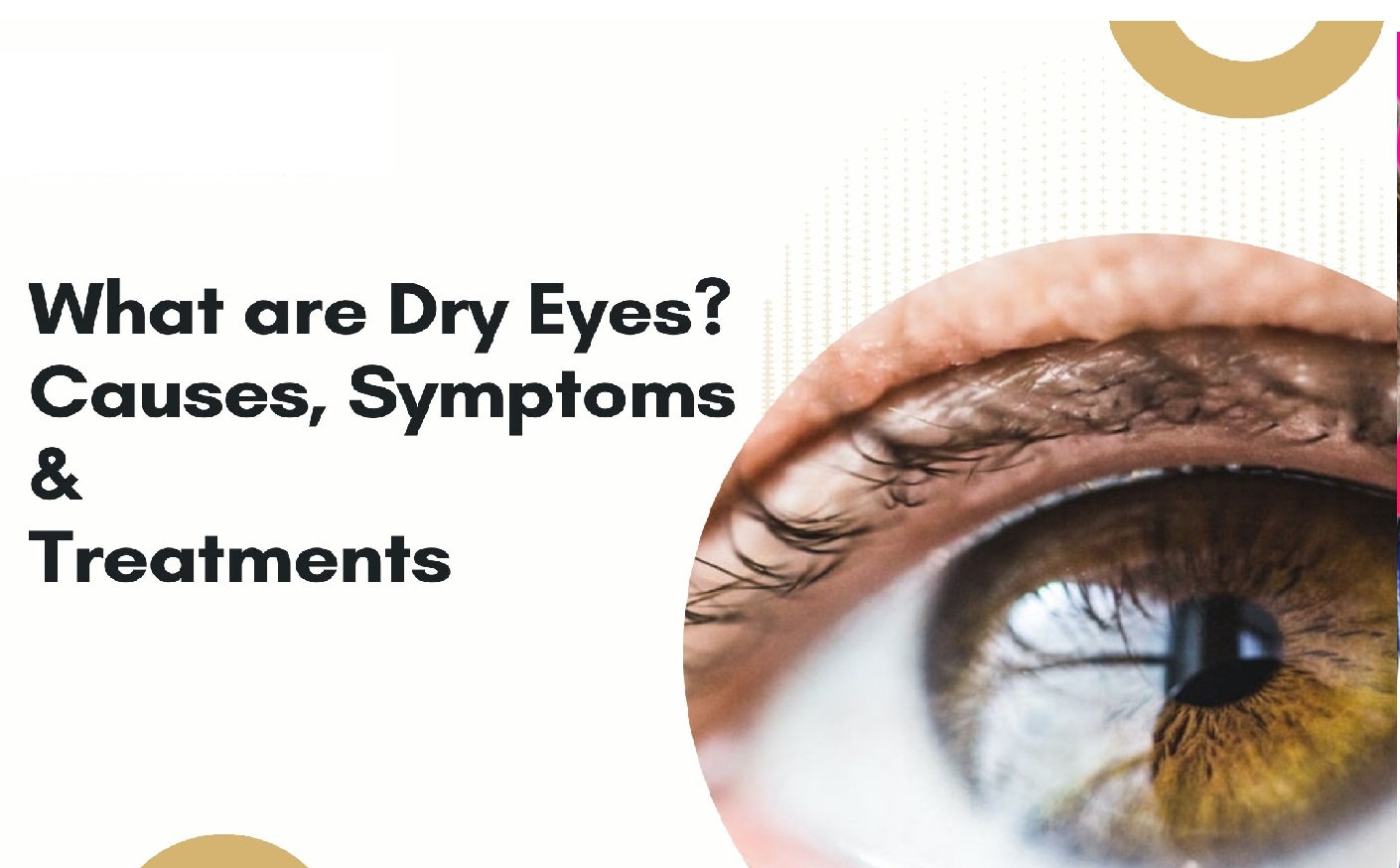What is Dry eye syndrome
Dry eye syndrome, also known as dry eye disease, is a common condition that occurs when the eyes do not produce enough tears or the tears that are produced are of poor quality.
 |
| What is Dry eye syndrome, Causes, Symptoms and Treatment |
This can lead to symptoms such as dryness, irritation, redness, and a feeling of grittiness or discomfort in the eyes. In severe cases, dry eye syndrome can cause vision problems.
Dry eye syndrome( dry eye disease) Causes
Dry eye syndrome can be caused by a variety of factors, including:
- Aging: As we get older, our eyes naturally produce fewer tears.
- Certain medications: Some medications, such as antihistamines, decongestants, and antidepressants, can reduce tear production or alter the composition of tears.
- Hormonal changes: Hormonal changes, such as those that occur during menopause, can also affect tear production.
- Environmental factors: Dry or windy environments can cause the tears to evaporate more quickly, leading to dry eye syndrome.
- Medical conditions: Certain medical conditions, such as rheumatoid arthritis and Sjogren’s syndrome, can affect the tear-producing glands in the eye.
Treatment for dry eye syndrome
Here are 10 Ways to treat dry eye syndrome
- Use artificial tears: Artificial tears can help to lubricate the eyes and provide temporary relief from dry eye symptoms. Look for a brand that is free of preservatives, as these can be irritating to the eyes.
- Blink frequently: Blinking helps to spread tears evenly across the surface of the eye. Try to blink frequently, especially when you are reading, working on a computer, or watching television.
- Use a humidifier: Dry air can contribute to dry eye syndrome. Using a humidifier in your home or office can help to add moisture to the air and reduce dryness in the eyes.
- Take frequent breaks: If you work at a computer or engage in other activities that require you to focus on something close up for long periods of time, take frequent breaks to give your eyes a chance to rest.
- Avoid smoke and other irritants: Smoke, dust, and other irritants can worsen dry eye syndrome. Try to avoid exposure to these substances as much as possible.
- Drink plenty of water: Staying hydrated can help to keep your eyes moist. Aim to drink at least eight glasses of water per day.
- Wear sunglasses: Sunglasses can help to protect your eyes from dry, windy conditions and reduce the risk of dry eye syndrome.
- Use a humidifier at night: Using a humidifier in your bedroom can help to keep the air moist while you sleep, reducing the risk of dry eye syndrome.
- Try a warm compress: Placing a warm, damp washcloth over your closed eyes can help to loosen any blocked oil glands and improve tear production.
- See an eye doctor: If you are experiencing persistent or severe dry eye symptoms, it is important to see an eye doctor for a proper diagnosis and treatment. The doctor may prescribe medication or suggest other treatment options to help alleviate your symptoms.
It is important to see an eye doctor if you are experiencing dry eye symptoms, as untreated dry eye syndrome can lead to more serious problems.


